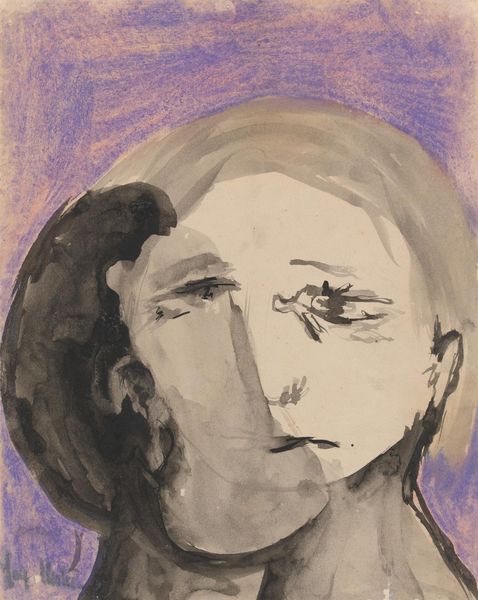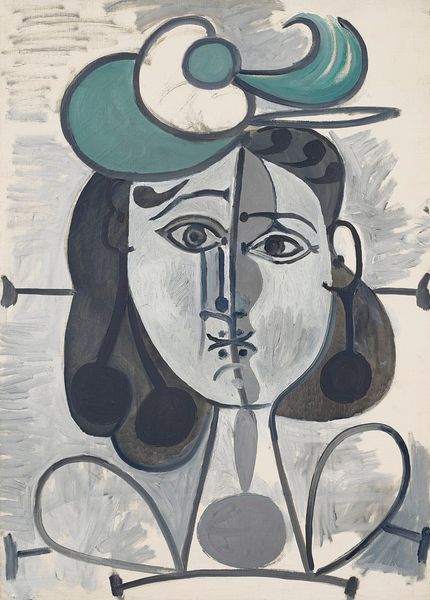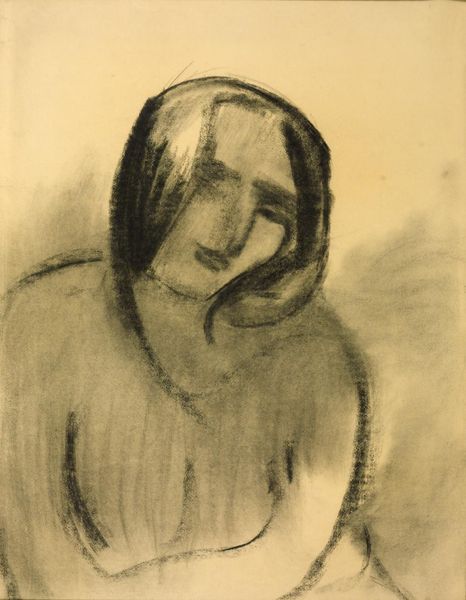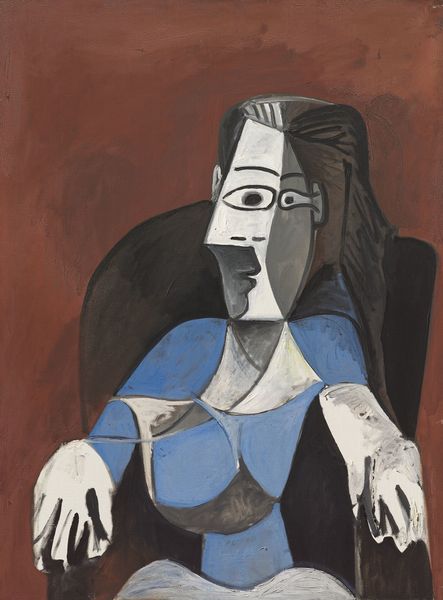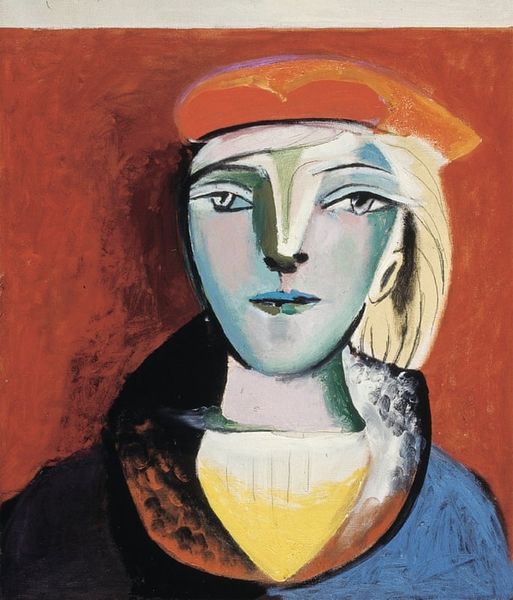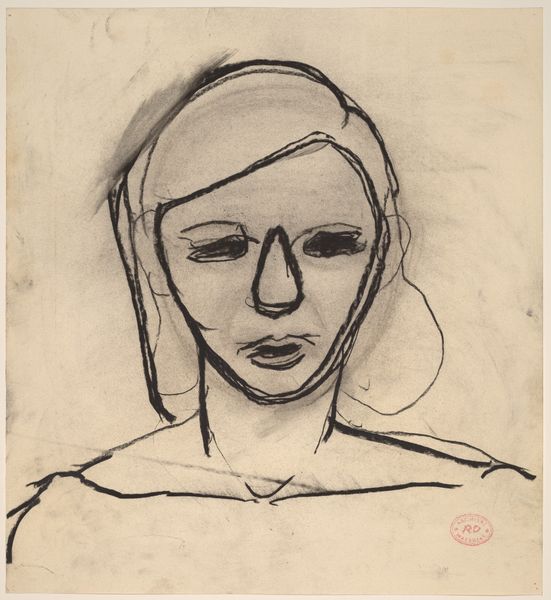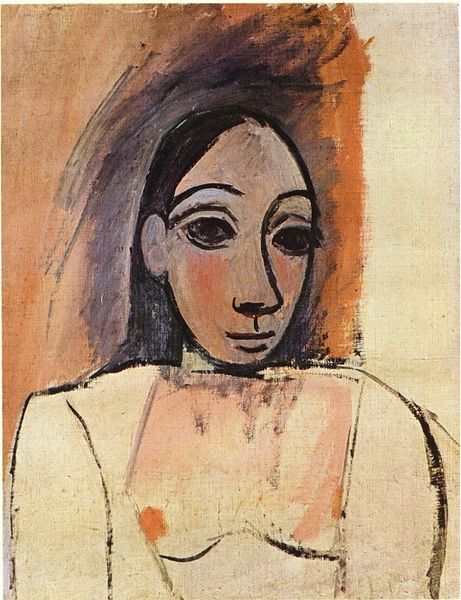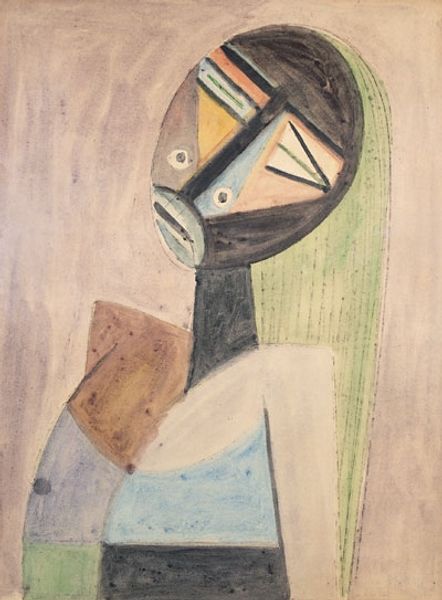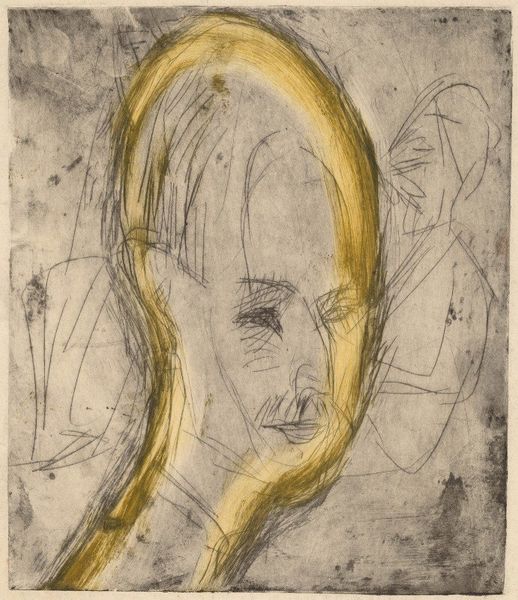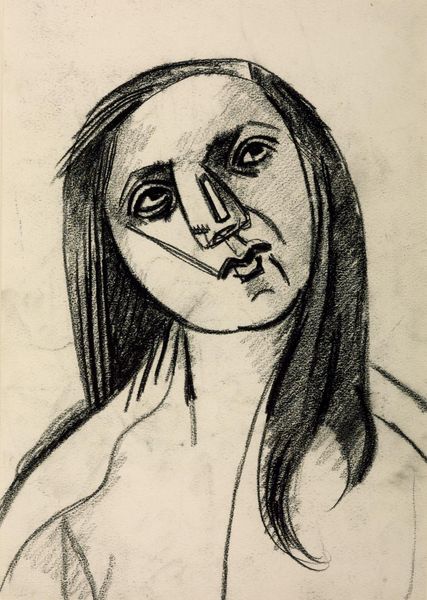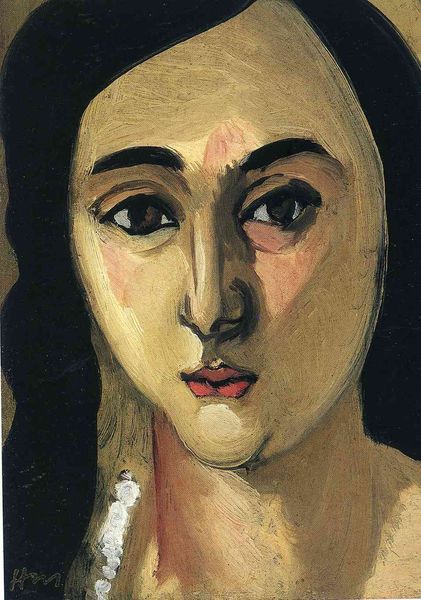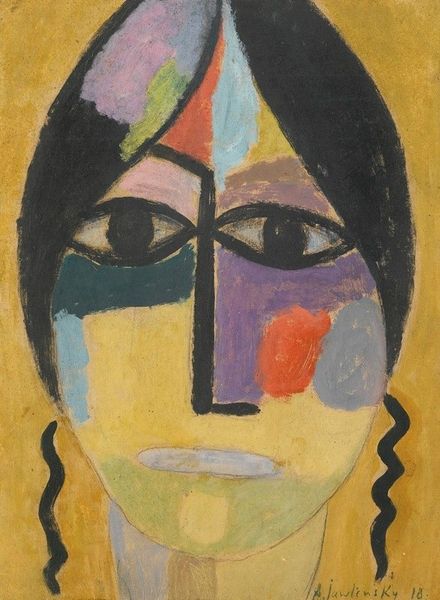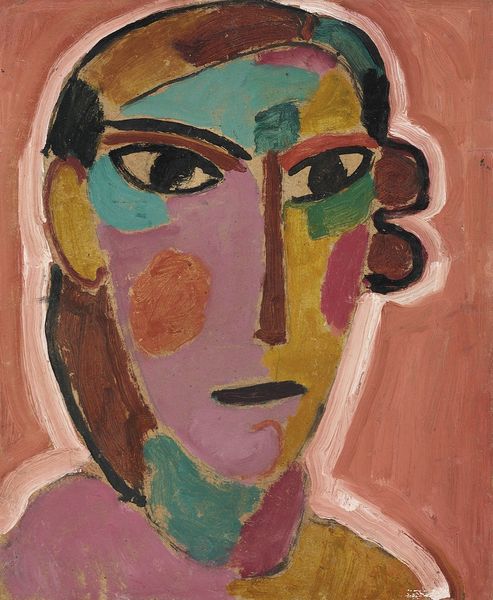
Copyright: Public Domain: Artvee
Curator: Standing before us is Pablo Picasso's "Tête de Femme," or "Head of a Woman," created in 1942. It's an oil painting that showcases his signature cubist style. Editor: My first impression is that it’s a powerful yet somber portrait. The muted tones really emphasize the angularity of the face, lending the woman a sense of unease. Curator: Absolutely. Picasso was painting this during World War II, a period marked by intense social and political upheaval. The fractured face could symbolize the fragmentation of society and identity that resulted from the war. Looking through a gendered and feminist lens, we might also question the representation of women and how violence and chaos have shaped it. Editor: It’s intriguing how Picasso dislocates and reassembles the facial features. From an art historical perspective, Cubism itself aimed to represent multiple viewpoints simultaneously, challenging traditional perspectives of representation. Do you think he’s making a commentary on how war can shatter perception? Curator: Definitely. It makes me think about trauma theory and how trauma defies a linear narrative. Her eyes, for example, don’t quite align, creating a sense of disequilibrium. This visual representation invites discussion about how the disruptions and forced dislocations of conflict affect individual psyches, and in turn collective well-being. Editor: Also, notice how the almost monochromatic palette impacts the viewing experience. Its austerity resonates strongly with the general mood of suffering prevalent during wartime. There’s a rejection of idealised representations. Instead, the focus falls on a very visceral portrayal. Curator: And to echo that, thinking about the portraiture tradition broadly, the disruption of beauty standards and the deconstruction of the female form serves as a deliberate statement. It suggests a breaking away from societal expectations imposed upon women, which were frequently destabilized even further during times of war. Editor: Studying "Tête de Femme" provides not only artistic insight but also an entry point into comprehending the wider sociopolitical context of wartime. Curator: Agreed. By critically exploring those intersectional historical and social experiences interwoven into this piece, we gain profound insights into both the artist's intentions and the emotional environment of a world struggling with conflict and transition.
Comments
No comments
Be the first to comment and join the conversation on the ultimate creative platform.
